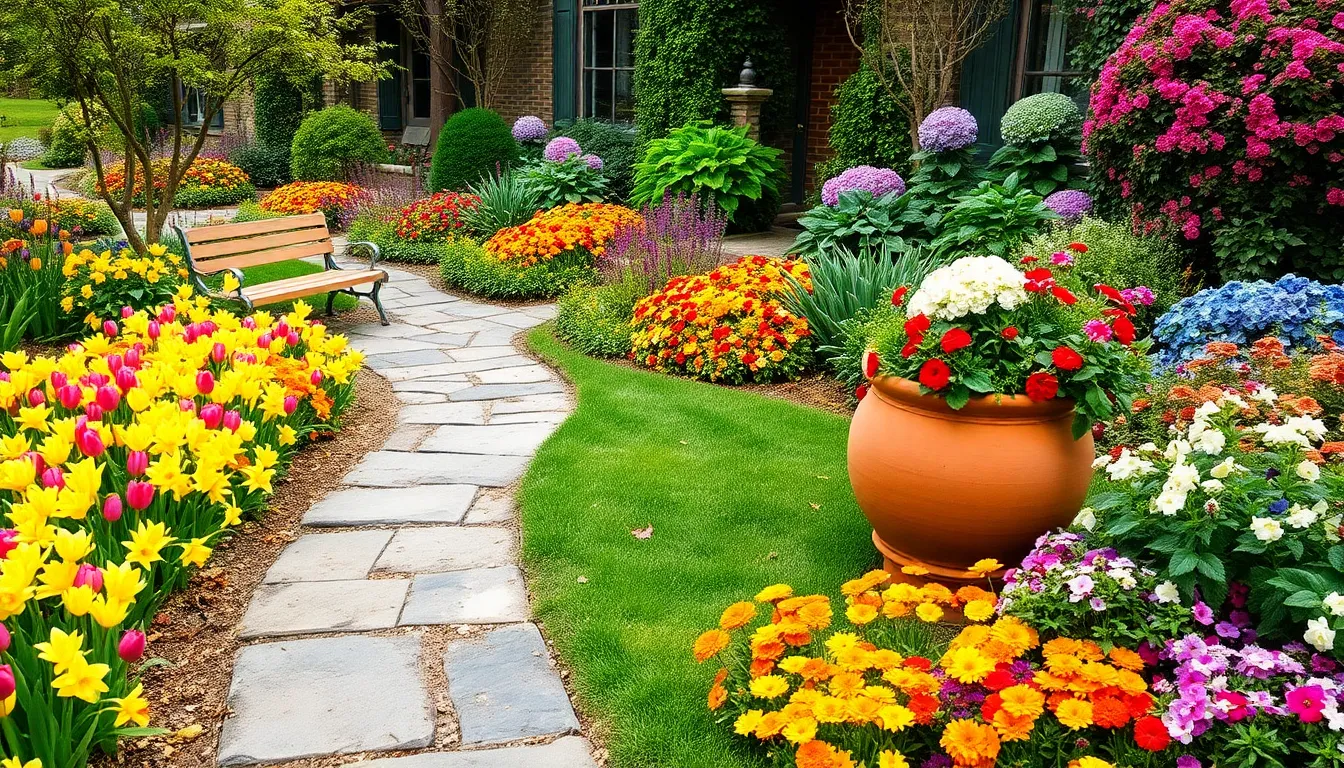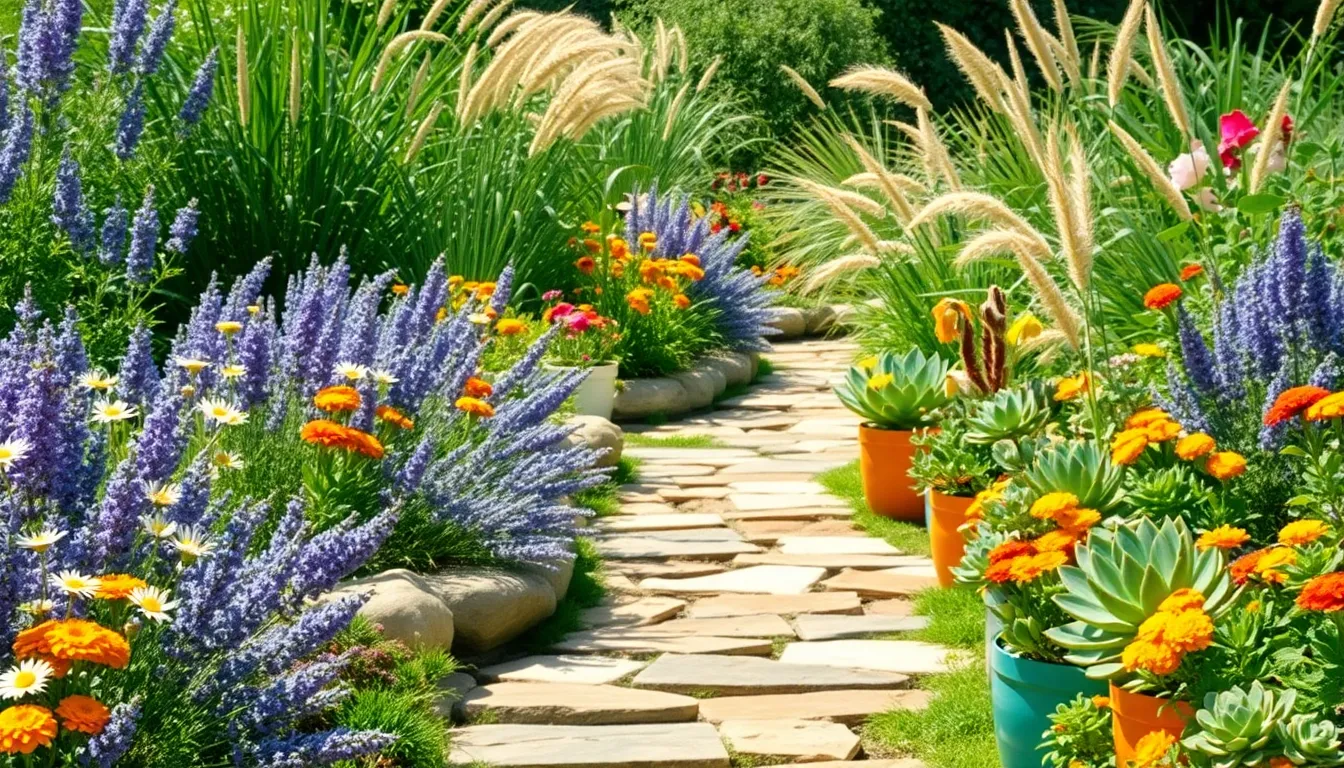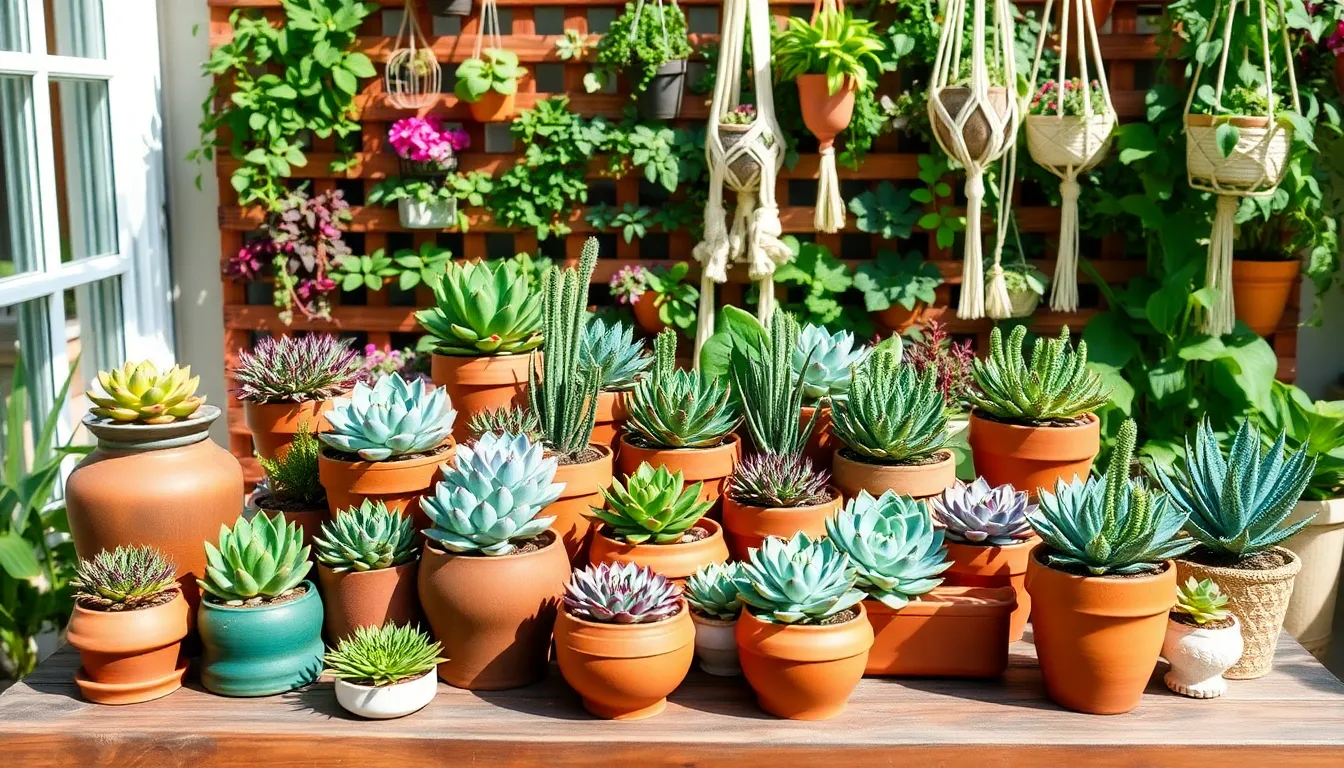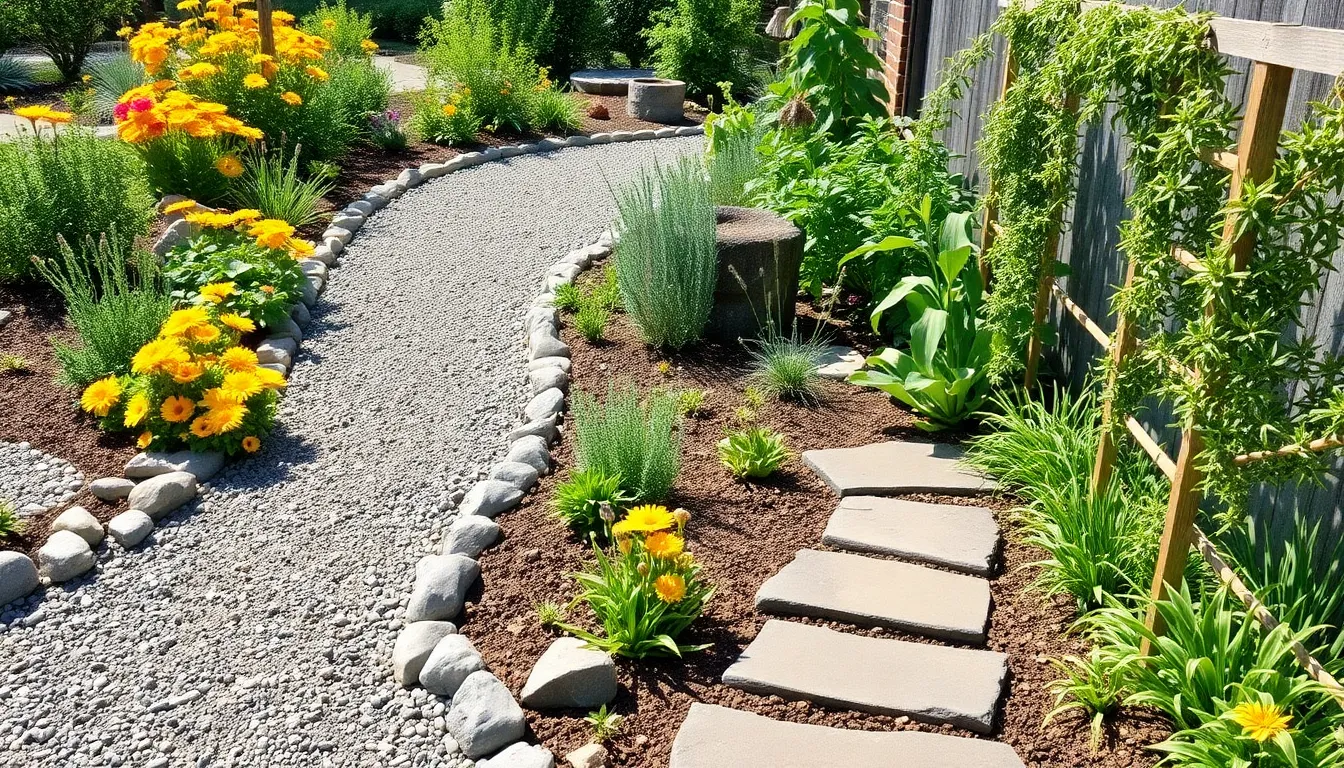Welcome to the colorful world of front yard landscaping, where every season offers a new opportunity to transform your outdoor space into a vibrant, inviting masterpiece! Whether you’re a beginner dipping your toes into the rich soil of gardening or a seasoned expert looking to refresh your landscape, “9 Seasonal Front Yard Landscaping Ideas” is your guide to crafting a garden that dazzles year-round. With a blend of creativity and practicality, these ideas promise to enhance your home’s curb appeal while providing a rewarding gardening experience.
In this guide, you’ll discover a carefully curated list of plants and techniques designed to thrive during each season. By following these suggestions, you’ll not only enjoy a front yard that’s in constant bloom but also gain the satisfaction of watching your handiwork flourish. Practicality is at the heart of this guide, ensuring that you can confidently tackle each project with ease. So, roll up your sleeves and get ready to enjoy the beauty and bounty of a well-landscaped front yard that reflects your passion for gardening.
Plant Bulbs for Spring Blooms
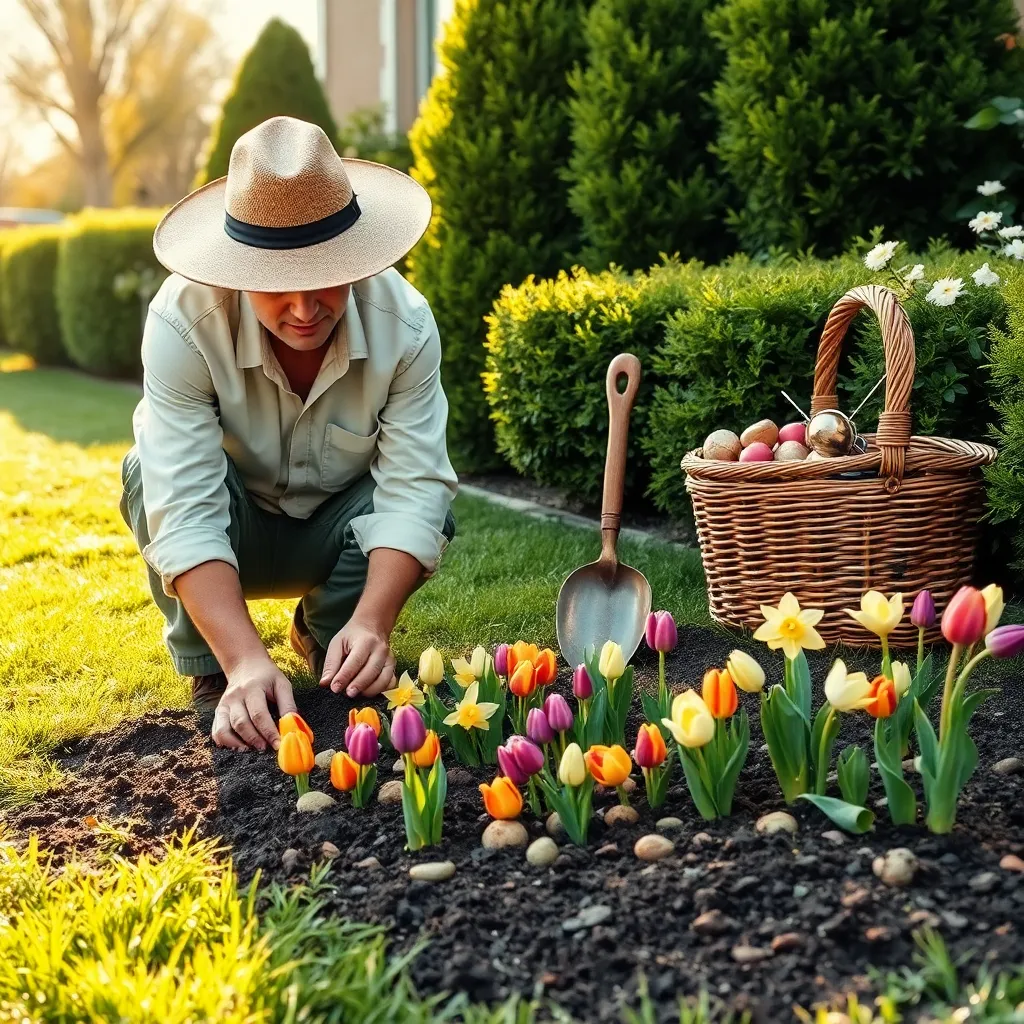
For a vibrant spring display, plant bulbs in the fall when the soil is cool but not yet frozen. Choose bulbs like tulips, daffodils, and hyacinths, which are well-suited for most climates and offer a range of colors and fragrances.
Ensure the planting site has good drainage, as bulbs can rot in overly wet soil. Amend heavy clay soils with compost or sand to improve drainage and create a more hospitable environment for the bulbs.
Plant bulbs at a depth three times their height, with the pointed end facing upwards. Space them appropriately, usually about three times their width apart, to allow each plant to grow and spread naturally.
After planting, water the area thoroughly to help settle the soil and remove air pockets. Mulch the area with a layer of organic material like shredded leaves or straw to insulate the bulbs over winter and conserve moisture.
For those looking to enhance their gardening skills, consider layering bulbs in a single planting hole to achieve a prolonged blooming period. This technique, often called bulb lasagna, involves planting larger bulbs deeper and smaller bulbs closer to the surface.
Mulch Beds for Winter Protection
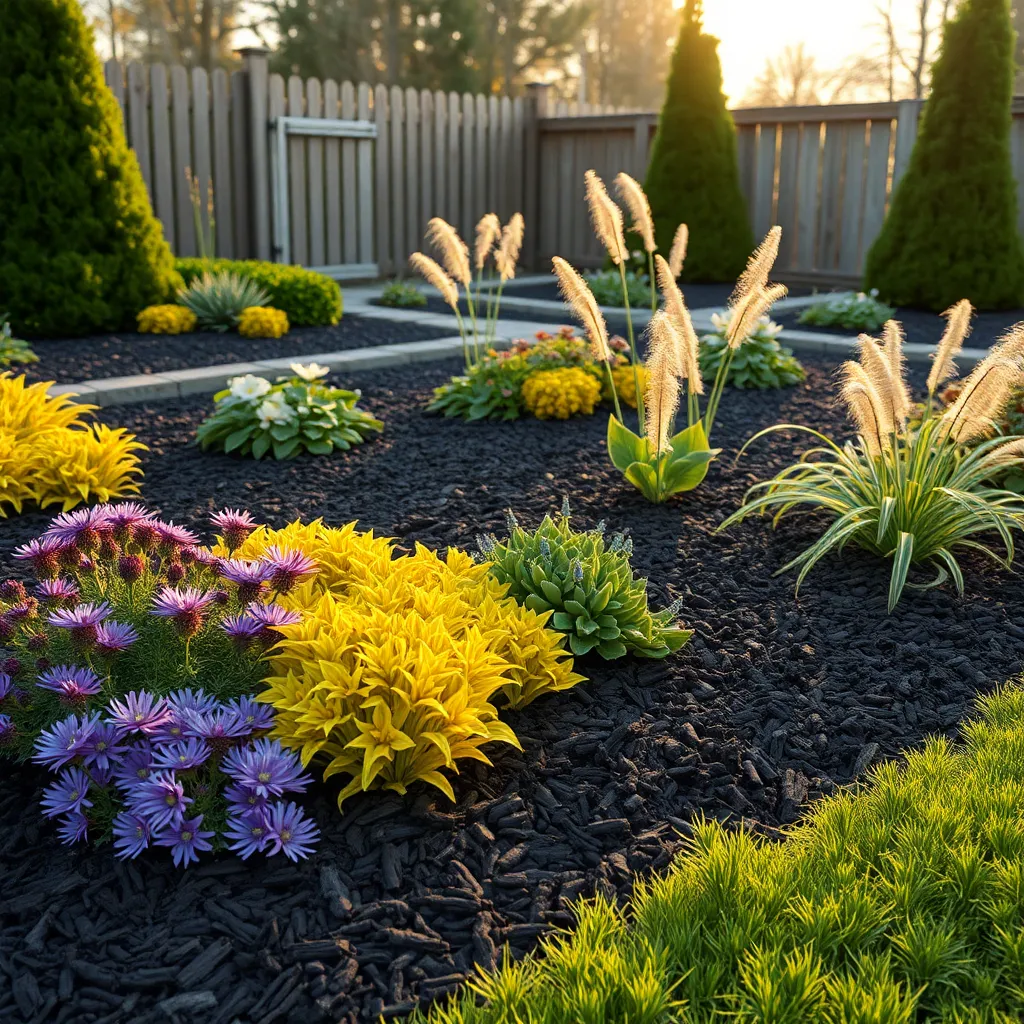
As winter approaches, preparing your garden with mulch beds is an excellent way to protect your plants. Mulching helps to insulate soil, keeping roots warm during frosty conditions and preventing temperature fluctuations that can stress plants.
To start, choose the right type of mulch for your garden’s needs. Organic mulches, such as shredded bark, straw, or pine needles, not only protect but also enrich the soil as they decompose.
Spread a layer of mulch about 2 to 4 inches thick around the base of your plants. This thickness is ideal for providing insulation while allowing moisture to permeate the soil.
For advanced gardeners, consider using a mix of mulch types tailored to your specific plants. For instance, combining straw with a layer of compost can provide both protection and nutrients, encouraging healthier growth come spring.
- Tip for Beginners: Avoid piling mulch directly against plant stems or trunks, as this can lead to rot.
- Advanced Tip: In regions with heavy snowfall, use mulch to create gentle slopes away from plant bases to prevent water pooling during snowmelt.
Incorporate Seasonal Flower Varieties
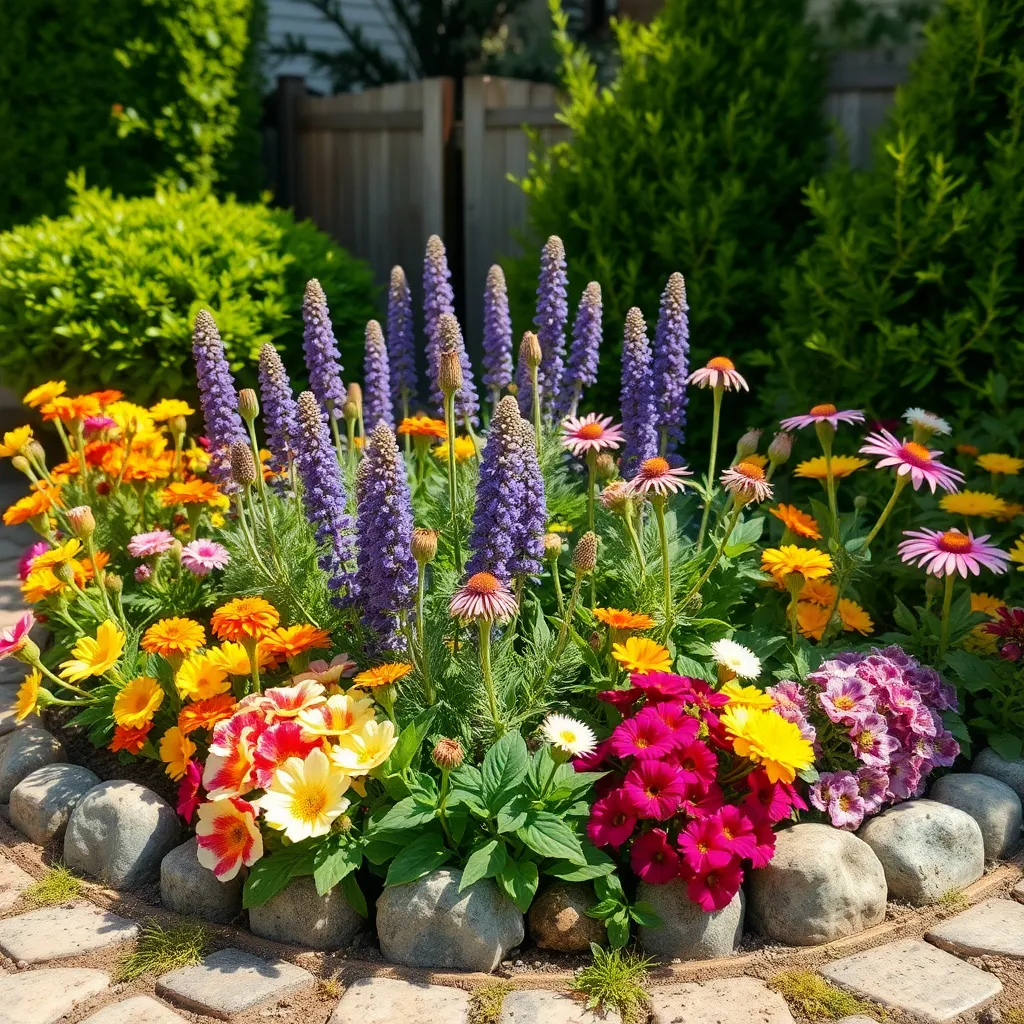
Adding seasonal flower varieties to your front yard can transform it with vibrant color and texture. Start by choosing flowers suited to your local climate and soil conditions, ensuring they thrive throughout the season without extra stress.
For spring, consider planting tulips and daffodils, which bring a burst of color after winter’s cold grip. These bulbs require well-draining soil and a sunny location to perform their best, so prepare your flower beds accordingly.
In summer, opt for heat-loving varieties like zinnias and marigolds, which can withstand warmer temperatures. Water these flowers regularly, allowing the top inch of soil to dry out between waterings to prevent root rot.
As autumn approaches, switch to chrysanthemums and asters, which thrive in cooler temperatures and shorter days. Deadheading spent blooms encourages continuous flowering and helps maintain a tidy appearance in your yard.
Winter doesn’t mean your garden has to be barren—plant pansies and ornamental cabbages for a touch of color in the colder months. These hardy plants can tolerate frost and prefer slightly acidic soil, so test your soil’s pH before planting.
For advanced gardeners, consider experimenting with layering planting times to ensure a continuous display of blooms. Research the bloom periods of your chosen flowers and stagger planting dates accordingly to maximize your garden’s visual appeal.
Add Evergreen Shrubs for Structure
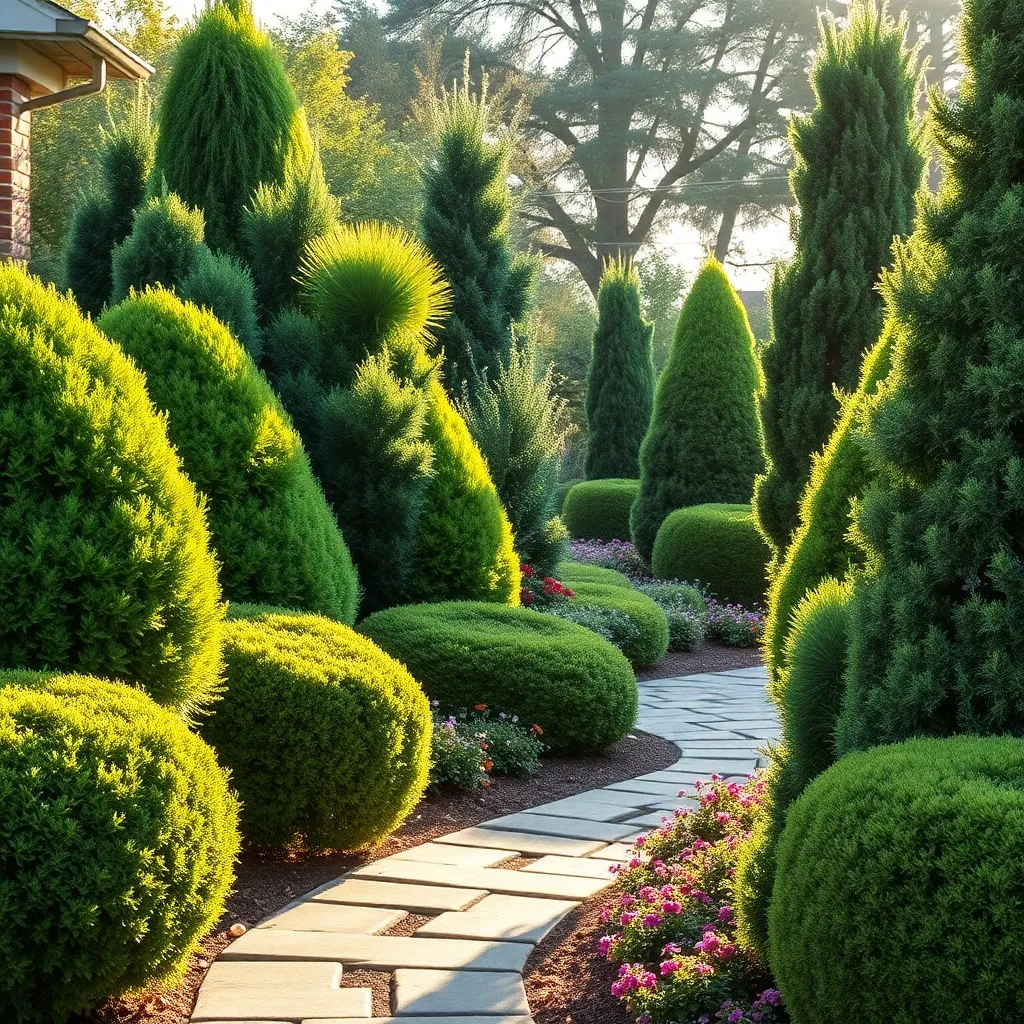
Adding evergreen shrubs to your front yard provides year-round structure and interest. Evergreens like boxwood or holly are excellent choices, offering lush greenery even in the coldest months.
Consider the specific growing conditions in your yard when selecting shrubs. Most evergreens prefer well-drained soil and partial to full sunlight, so check the sun exposure and soil type of your planting area.
Watering is crucial, especially during the first year as the plants establish their root systems. Plan to water deeply once a week, adjusting based on rainfall and the specific needs of your shrubs.
For those looking to enhance their gardening skills, pruning evergreens to maintain shape and encourage dense growth is essential. Prune in late winter or early spring before new growth begins, ensuring a tidy appearance and healthy plants.
Install Drip Irrigation for Efficiency
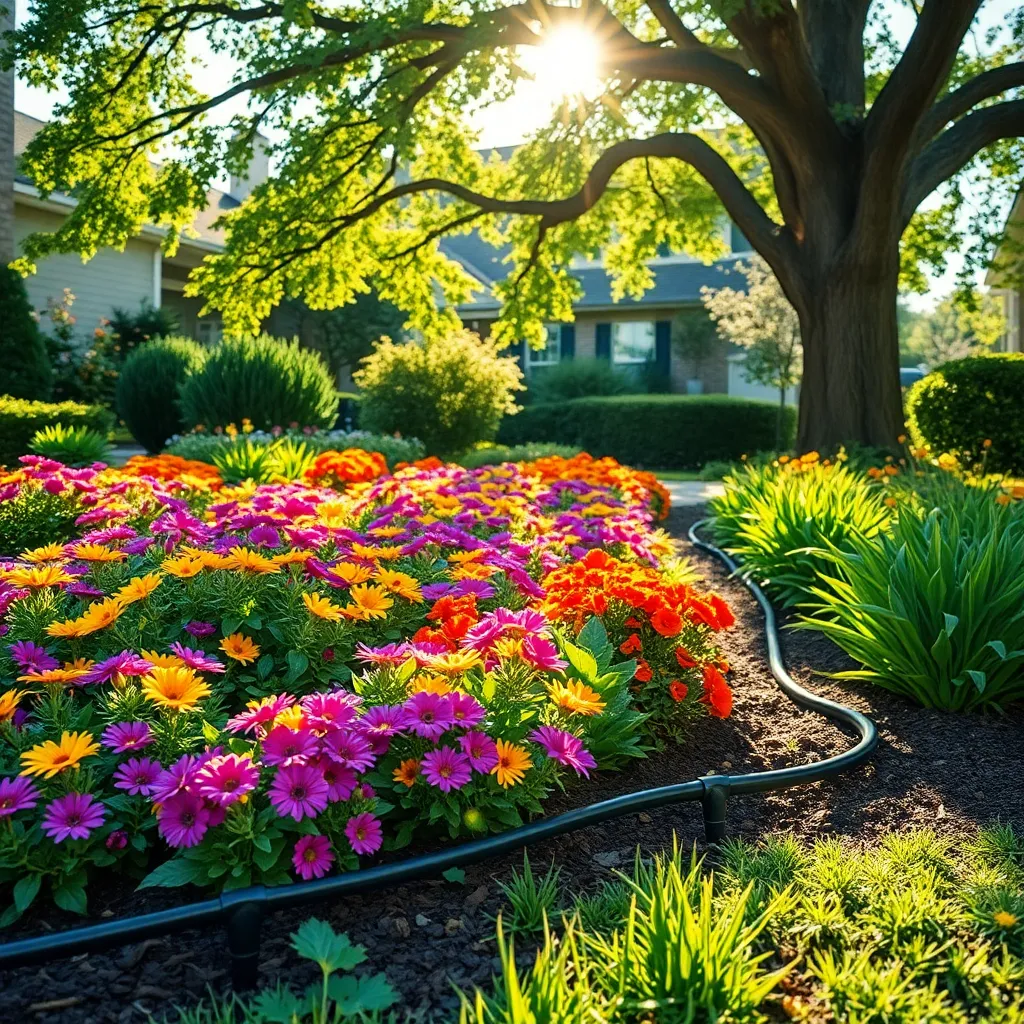
Installing drip irrigation in your front yard is an excellent way to ensure your plants receive the precise amount of water they need. This efficient system minimizes water waste by delivering moisture directly to the roots, making it perfect for water-conscious gardeners.
To set up a drip irrigation system, start by planning the layout based on your plant arrangements. Make sure to measure the distance between plants and the water source, as this will determine the length of tubing required.
Begin by laying out the main supply line along the desired path, using stakes to secure it in place. Then, connect individual drip lines to each plant area, adjusting the emitters according to the plant’s water requirements.
For beginners, it’s helpful to use an adjustable emitter, which allows you to control the flow rate easily. More experienced gardeners might choose to automate their system with timers, ensuring consistent watering schedules even when away from home.
Use Perennials for Year-Round Color
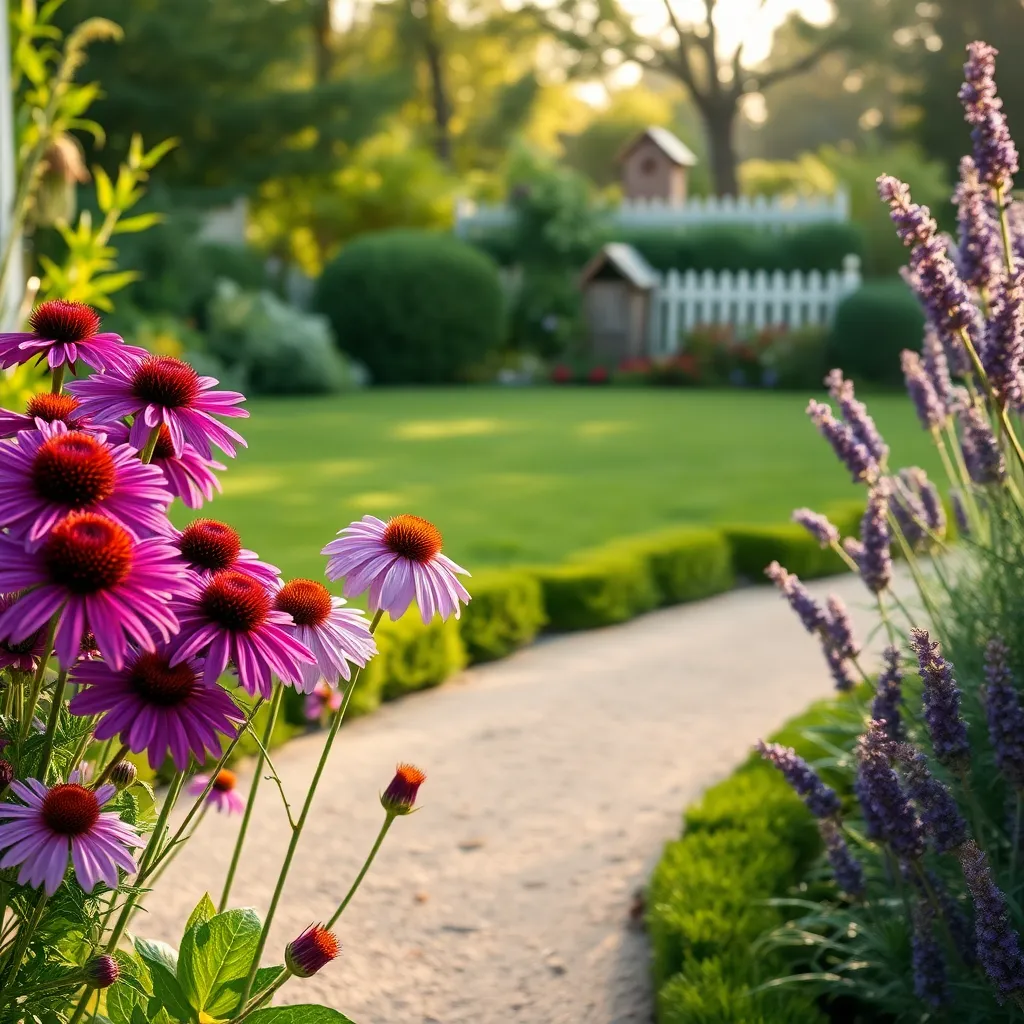
Perennials are a fantastic choice for adding vibrant color to your garden throughout the year. By selecting a mix of plants that bloom in different seasons, you can ensure that your front yard is always brimming with life.
Consider planting coreopsis for its long-lasting summer blooms and hardy nature. This sun-loving perennial thrives in well-drained soil and requires minimal watering once established, making it an excellent low-maintenance option.
For spring and fall interest, try incorporating asters and sedum into your landscape. Asters provide a burst of color in late summer and fall, while sedum, with its succulent leaves, offers texture and blooms that persist into autumn.
Advanced gardeners might explore layering techniques, combining perennials with different heights and bloom times. This strategy not only maximizes color but also adds depth and dimension to your garden, creating a more dynamic visual experience.
Create a Focal Point with Trees
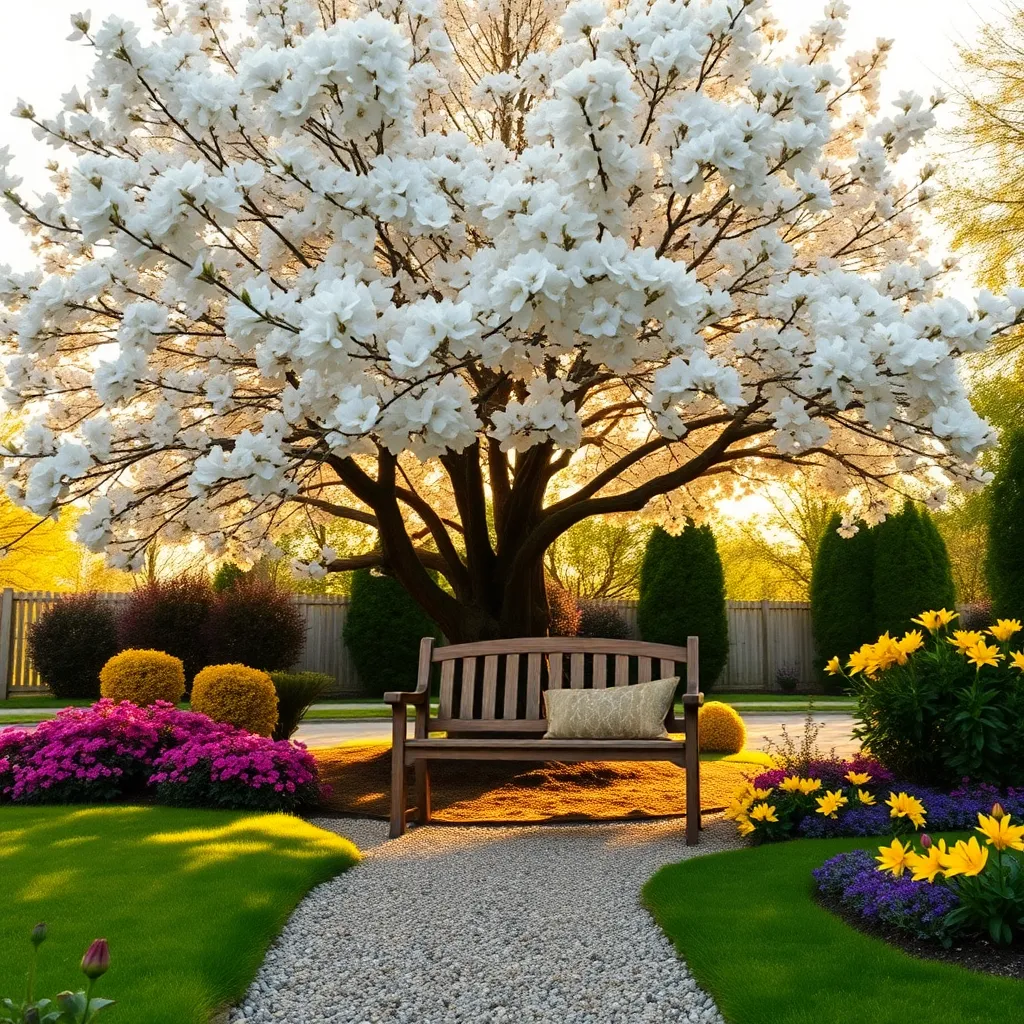
Creating a focal point with trees can transform your front yard into a captivating landscape. Trees not only add vertical interest but also provide structure and balance to your garden design.
Start by selecting a tree that suits the size of your yard; smaller yards benefit from compact varieties like the Japanese Maple. Before planting, consider the tree’s mature size and growth rate to ensure it won’t outgrow its space or interfere with structures.
For optimal growth, choose a location with the right light conditions; for instance, dogwoods thrive in partial shade. Ensure the soil is well-draining and enriched with organic matter to support healthy root development.
Water newly planted trees deeply and regularly during their first growing season to establish strong roots. Mulching around the base helps retain moisture and suppress weeds, providing a conducive environment for growth.
Prune Hedges for Neat Edges
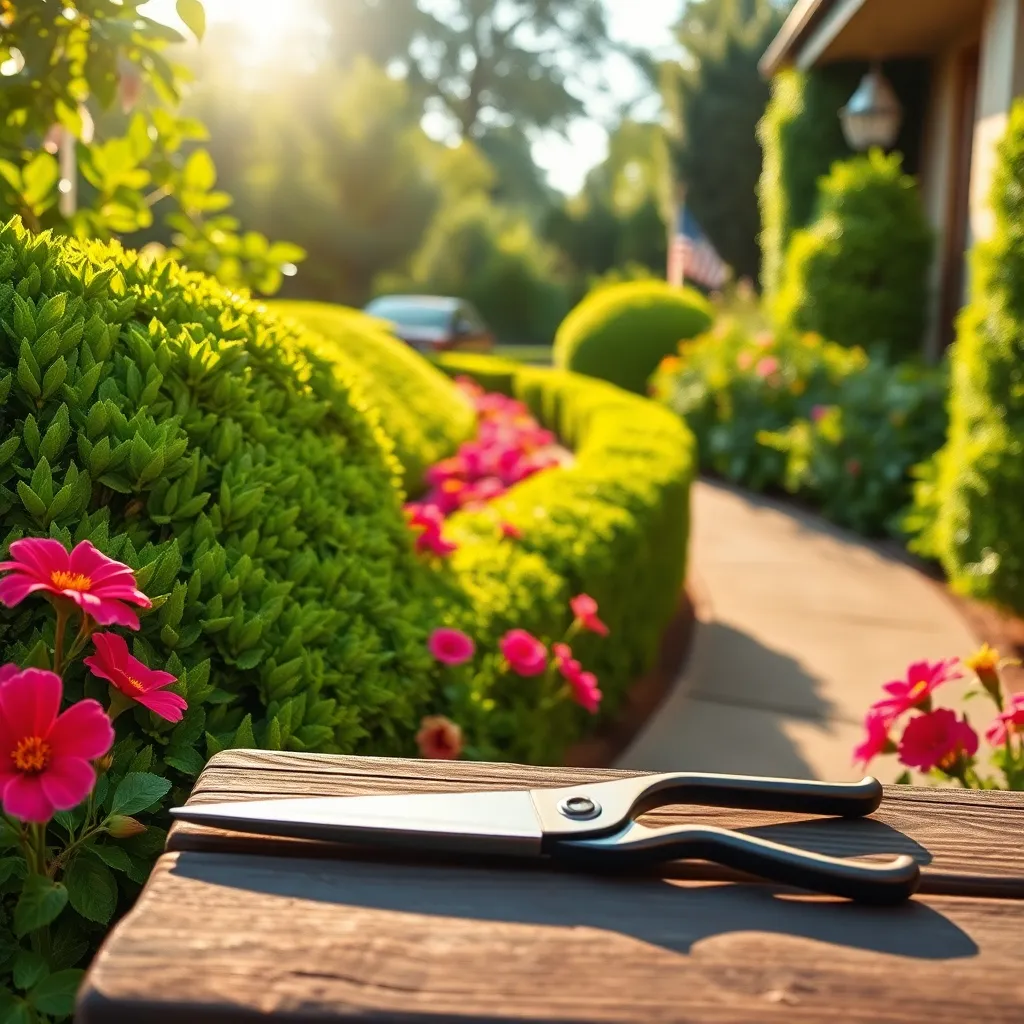
When it comes to maintaining hedges, timing and technique are crucial for achieving neat edges. It’s best to prune your hedges in late winter or early spring before new growth begins, as this encourages a fuller, healthier hedge.
Always use sharp, clean tools to make precise cuts that prevent disease. For beginners, hand shears work well for small to medium-sized hedges, while electric trimmers are suitable for larger hedges to save time and effort.
Begin trimming by removing dead or damaged branches to improve airflow and sunlight penetration. This practice not only enhances the hedge’s appearance but also promotes vigorous growth throughout the season.
For advanced gardeners, consider shaping your hedges with a slight taper, wider at the base, to prevent the bottom from becoming shaded and sparse. Regular light pruning every few weeks during the growing season keeps hedges looking tidy and encourages dense foliage.
Decorate with Seasonal Garden Accents
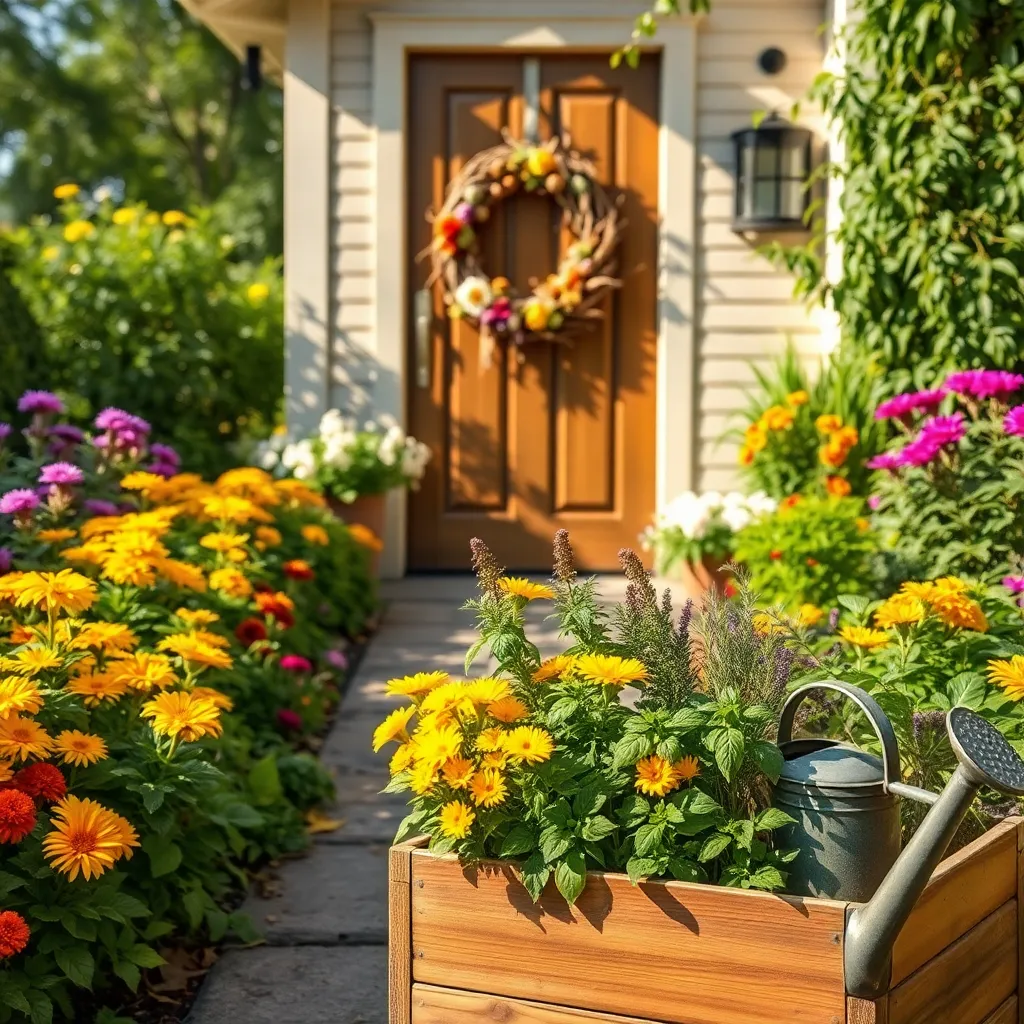
Enhancing your garden with seasonal accents can dramatically transform your front yard’s appearance. Start by incorporating potted plants with vibrant blooms that reflect the current season, such as tulips in spring or mums in autumn.
Consider using garden decor items like seasonal wreaths and themed garden flags to add charm and character. Place these accents near entryways or focal points to draw attention and create a welcoming atmosphere.
For a more advanced approach, try layering different plant heights and textures to create visual interest throughout the year. Use taller shrubs or ornamental grasses as a backdrop and layer with smaller seasonal flowers at the front to ensure year-round color and structure.
Ensure that your seasonal plants are matched with the right soil types and light conditions to thrive. For example, spring bulbs like daffodils prefer well-drained soil and full sun, while winter pansies can tolerate partial shade and cooler temperatures.
Conclusion: Growing Success with These Plants
As you explore the vibrant tapestry of seasonal front yard landscaping ideas, it’s clear that nurturing your relationship requires a similar touch of creativity and care. From embracing change with the blooms of spring to maintaining resilience through the chill of winter, each season offers unique insights for fostering a thriving partnership. Key concepts such as adaptability, nurturing growth, finding balance, and celebrating milestones mirror the natural cycle of your garden, reminding you that relationships, too, flourish with thoughtful attention and intention.
To put these insights into practice, consider dedicating time this week to discuss with your partner which seasonal changes your relationship could embrace. Whether it’s planning a new shared hobby or simply revisiting cherished traditions, these moments of connection can breathe fresh life into your bond.
Remember, nurturing your relationship is a continuous journey. Save or bookmark this article as a handy guide to revisit these ideas when needed. As you cultivate a relationship that blossoms through all seasons, know that each step you take today sows seeds for a successful, enduring partnership tomorrow. Embrace this knowledge and watch your relationship thrive.

